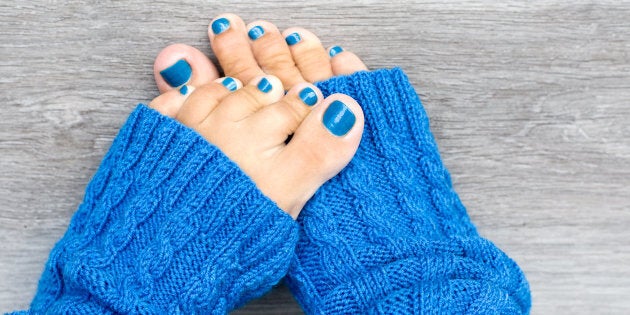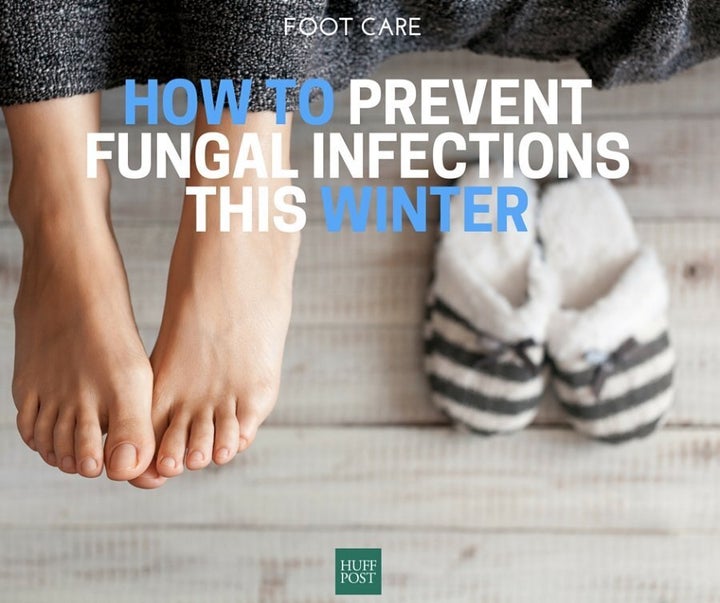
Winter -- a time for grilled cheese toasties and piping hot tomato soup -- but also, a time to remove the nail polish from your toenails.
Why? Because not only does prolonged wear cause discolouration of the toenail (hello, yellow-tinged nails) but it also puts you at risk of fungal infections.
"Most polishes contain certain chemicals that are actually quite damaging to the nail. Aesthetically, it causes discolouration and can make the nail brittle," Thomas Do Canto, podiatrist and founder of Walker Street Sports Podiatry told The Huffington Post Australia.
"Discolouration isn't the real health issue though, what's more concerning is that as a result of the polish acting as a barrier that hinders the breathability within the nail plate, it creates a good breeding ground for bacteria," Do Canto said.
Fungus loves warm, humid and moist environments. And the opportunity for bacteria to thrive is heightened during winter, given you're not generally wearing open-toed shoes or exposing your feet as they are generally inside shoes, socks or slippers.
There are certainly some cases where an infection has been growing underneath the polish without them knowing, due to the patient never actually inspecting their nails for themselves.
Do Canto said he witnesses the attitude of "out of sight, out of mind" regularly, especially for those getting year-round pedicures.
"There are certainly some cases where an infection has been growing underneath the polish without them knowing, due to the patient never actually inspecting their nails for themselves," Do Canto said.
"So it's definitely a good idea to have some time without polish. It gives you the opportunity to see your bare nails as well as giving them time to breathe," Do Canto said.
So how do you tell the difference between discolouration and an infection?
"There will be more focal areas of yellowing, white speccing either on top of the nail or underneath, ridges on the nail, cracking or thickening with an infection," Do Canto said.
If you are concerned, Do Canto recommends getting the nail assessed by a podiatrist.
"It's quite difficult for the untrained eye to see whether it's a fungal infection or whether it's just discolouration. If you see something that looks abnormal, it's a good idea to get it checked by a professional," Do Canto said.

- Don't rely on a pedicurist to alert you to an infection. Instead, remove your polish at home so you can keep track and get familiar with the health of your nails
- Fungal infections love warm, humid environments. Ensure you are wearing clean, dry socks every day
- If your work or dress shoes don't allow for socks, a good prevention measure is to either wear thin sockettes, or to dust the lining of the shoe with anti-fungal powder
- If you are young and mobile, ensure you are washing your feet well while in the shower or bath and drying them well